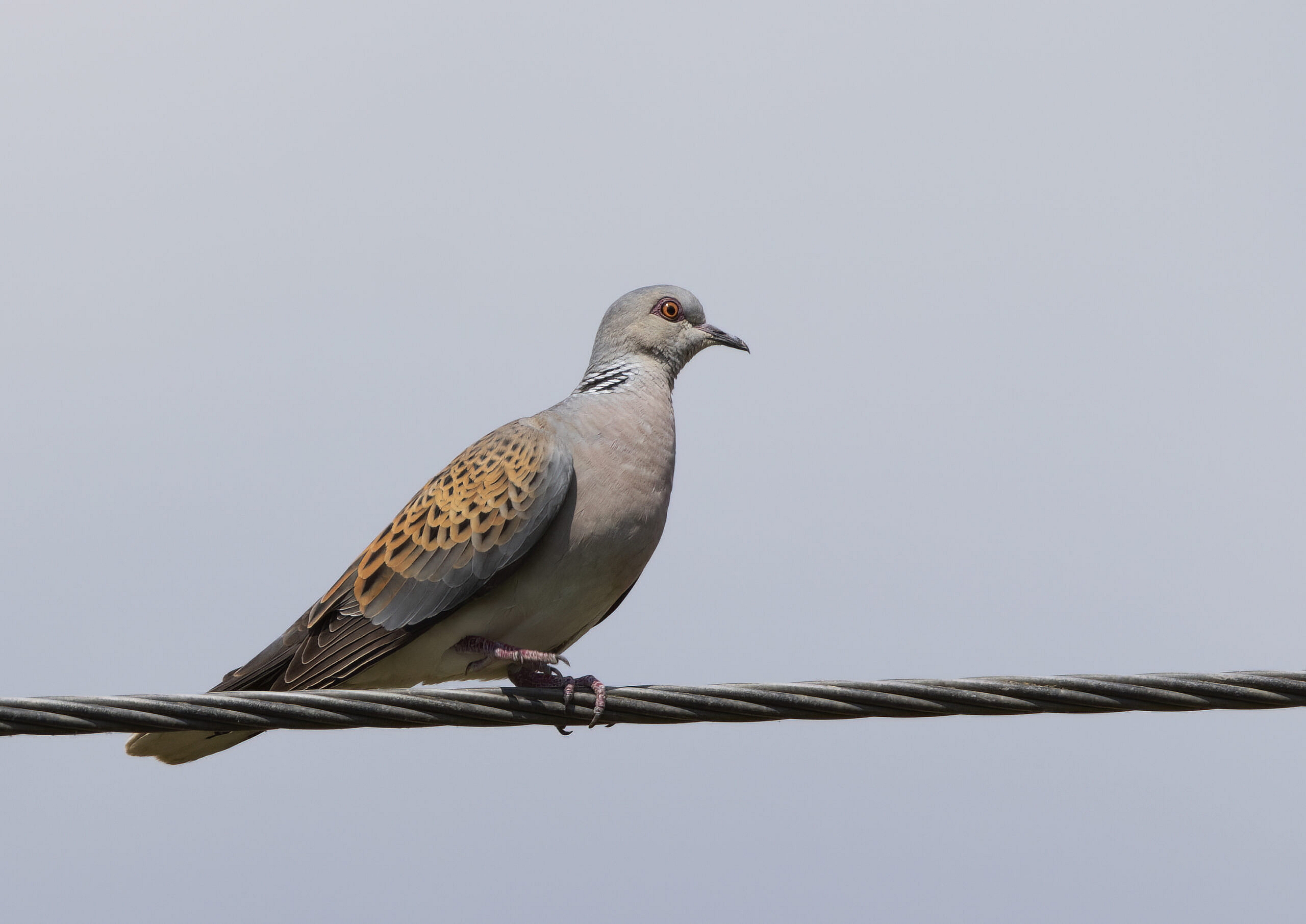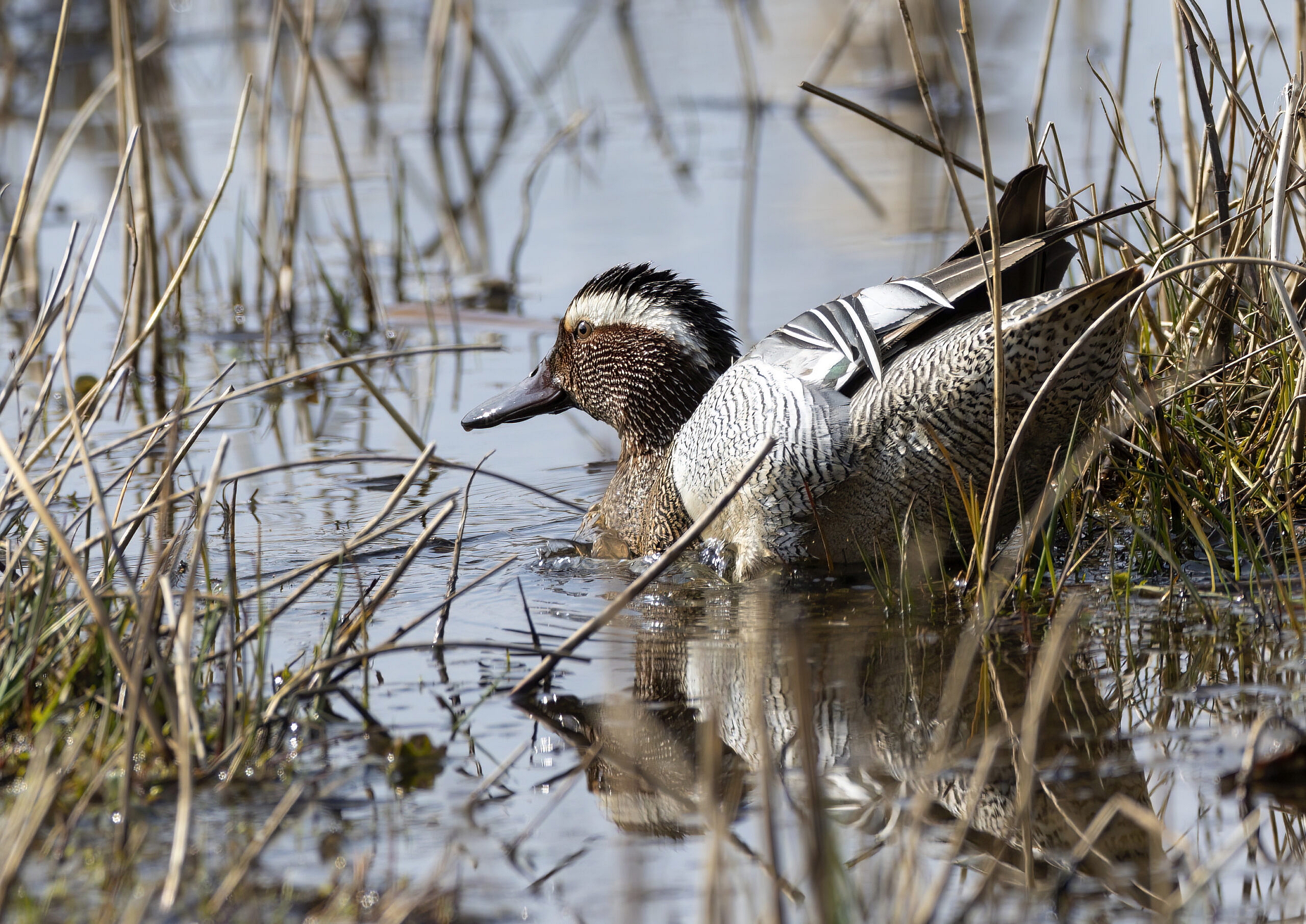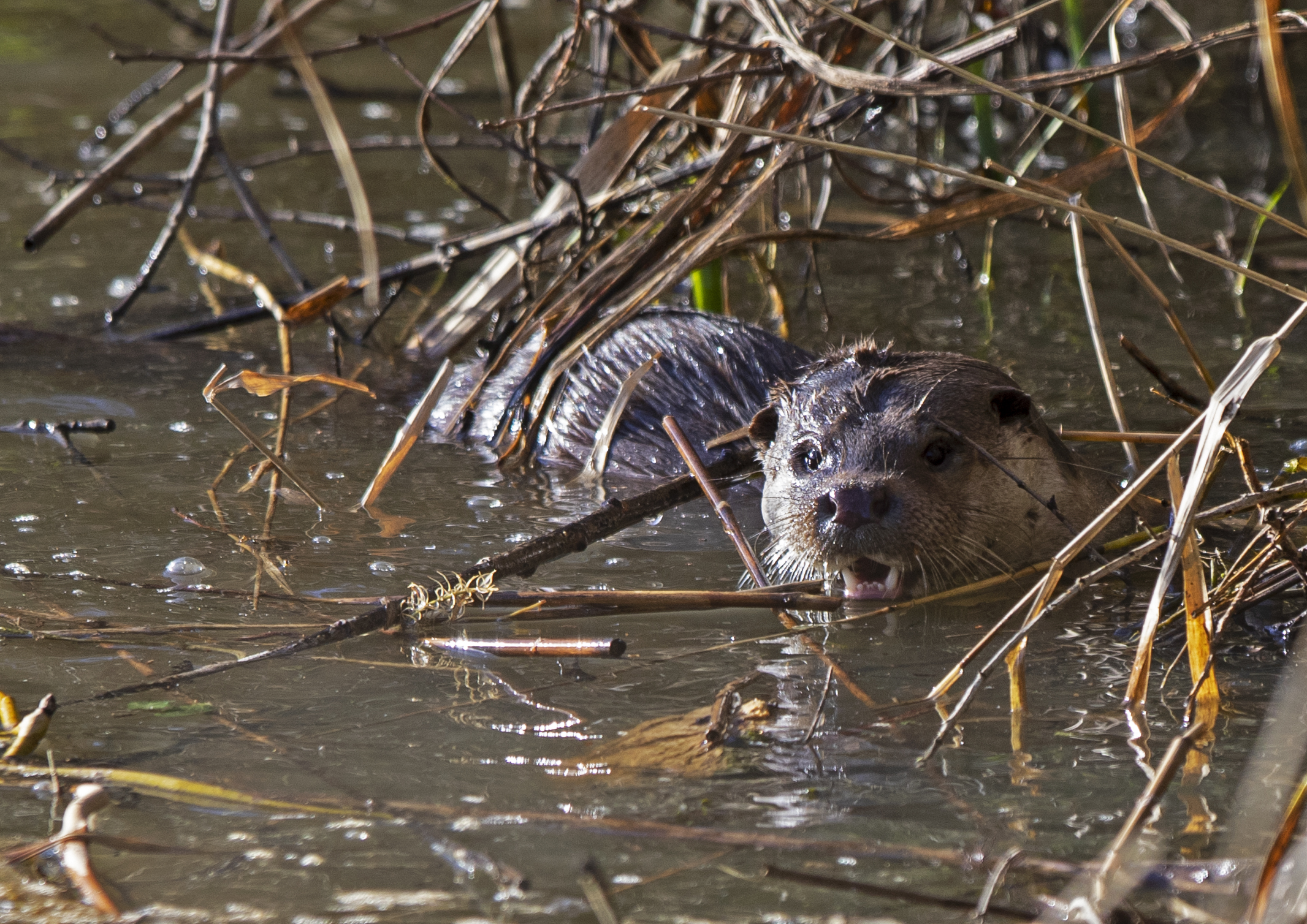It was, to put it mildly, not the most promising start to a day’s nature-hunting. It was the night the clocks went back, and they seemed to go back to the times of Noah. The rain overnight and into the late morning had been biblical, so thick and dense that it seemed like fog, erasing the view more than a few feet in front. I set off when it slackened slightly with every expectation of returning home, and nearly did so at the first roundabout, just yards from my front door. It had never flooded before in the thirty years we’d lived here, but it had flooded now, and I drove carefully through four inches of water.
Fortunately my destination was in the hills above Swindon, and following a local farmer who was kindly using his bale-picker to bulldoze the fallen tree-limbs off the road, I reached the nondescript wooden hut almost on time. I was in the middle of open arable fields now shorn of their crops and reduced to stubble waiting for ploughing and seeding. But it wasn’t the field I was here for, but the field margins, the six-foot strips of long, straggly grass now flopped over and pummelled by the rain, interspersed with stands of brambles. It was here, if things went well, I would find evidence of one of Britain’s smallest and most elusive mammals: the harvest mouse.
Harvest mice are small in the way that Mount Everest is big. They are so small that you could fit two, tails and all, end to end across the flat of your hand. They are so small they you would need two or three to balance a Jaffa cake on a pair of scales. Their Latin name is ‘Micromys minutus’, or ‘really incredibly small mouse’ with a bit of freedom in the translation. We’re talking world-class titchiness here.
For most of the year, harvest mice live in small nests of woven grass and move though the sward and thickets of brambles and hedges. They are the proud owners of Britain’s only prehensile tails, which in the manner of an monkey’s tail they can use to grasp and grip things, handy for snaring that nearby grass leaf and using your very limited bodyweight to pull it towards you so that you can clamber over. They are fairly omnivorous, happy to eat seeds, nuts, vegetation and small insects: since they have to eat a third of their bodyweight every day just to stay alive, they can’t afford to be fussy. And here’s the thing about harvest mice: practically everything we know about them, we’ve learned from captive animals. You almost never see them in the wild. I attended an online lecture from a harvest mouse expert who has spent forty years studying them in the wild. He’s seen one. From behind. As it was running away.
In the wild, harvest mice are well-hidden deep inside the grass sward. By the time you’ve walked up to the spot and parted the grass, they are somewhere else. We can live trap them, but even that can be challenge. So a lot of what we know about populations comes from finding their nests. By late October, the harvest mice have stopped breeding and descended nearer to the ground, where they will build new nests and share the runs of mice and voles. Their old nests, golf-ball sized bachelor pads and tennis-ball sized nursery nests, stay abandoned in the sward. And it was these that I was here to find. Guided by Wiltshire’s County Recorder for mammals, I set off in the company of a family and another hardy soul who had braved the downpour to get to the hunt. And it seemed our diligence was being recognised as the clouds vanished, the sun broke out, and we emerged into a beautiful Autumn day.
As we had been warned would happen, it was the children who found the first nest. Harvest mice make their nests from living grass that they split carefully and weave together, so that it becomes, in effect, part of the tussock, firmly anchored inside. They have no extrance holes: the mice just push their way in and out. It was almost eighty metres into our examination of a 100 metre length of bramble-filled grass before I found my first and only nest of the day. Once they are recorded, they are discarded, so I brought mine home. It’s an engineering miracle, wrought by a creature that could happily sit on my thumb.







Social Profiles